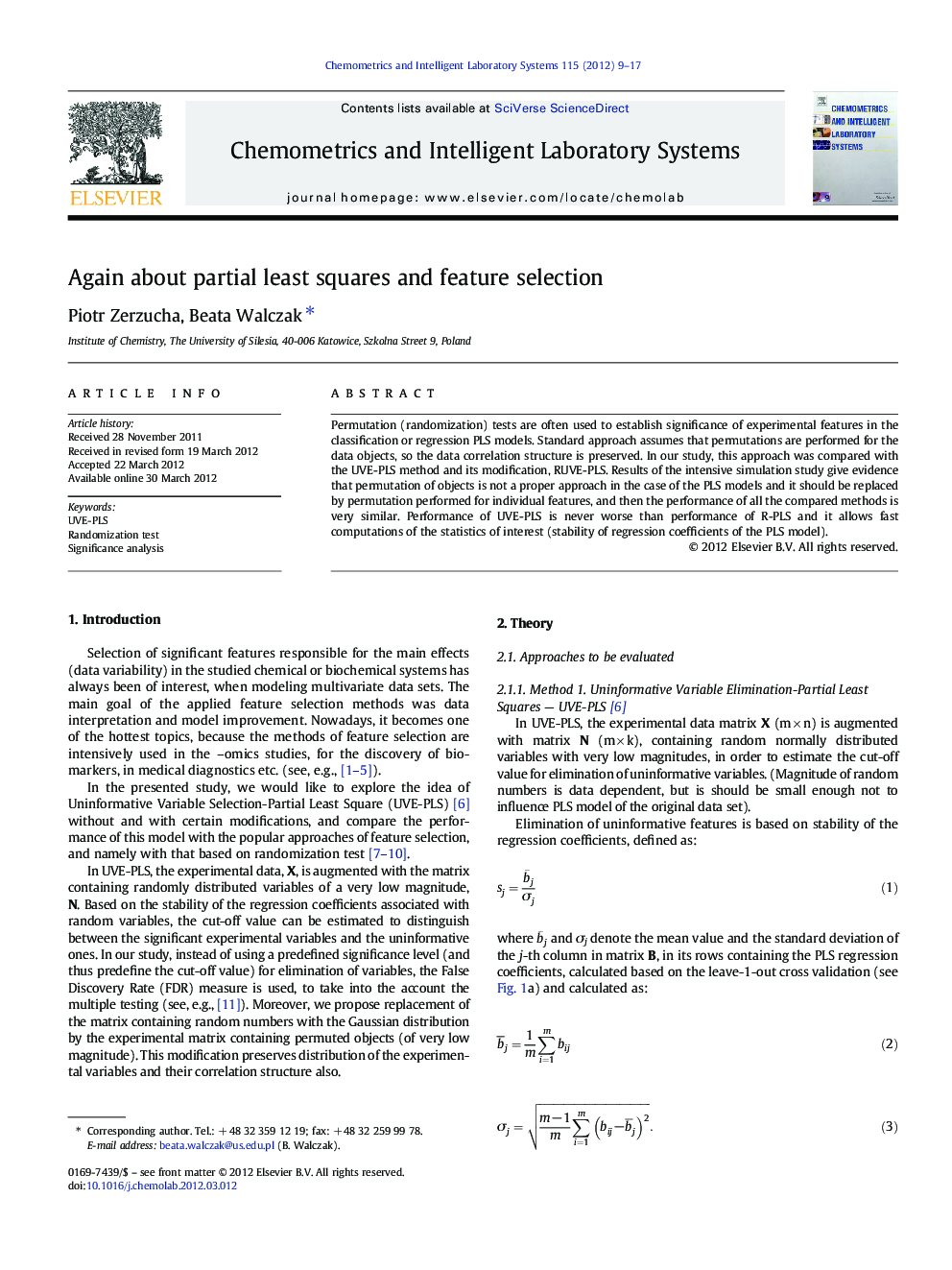| Article ID | Journal | Published Year | Pages | File Type |
|---|---|---|---|---|
| 1179656 | Chemometrics and Intelligent Laboratory Systems | 2012 | 9 Pages |
Permutation (randomization) tests are often used to establish significance of experimental features in the classification or regression PLS models. Standard approach assumes that permutations are performed for the data objects, so the data correlation structure is preserved. In our study, this approach was compared with the UVE-PLS method and its modification, RUVE-PLS. Results of the intensive simulation study give evidence that permutation of objects is not a proper approach in the case of the PLS models and it should be replaced by permutation performed for individual features, and then the performance of all the compared methods is very similar. Performance of UVE-PLS is never worse than performance of R-PLS and it allows fast computations of the statistics of interest (stability of regression coefficients of the PLS model).
► New method for feature selection. ► RUVE-PLS preserves distribution of the experimental variables. ► RUVE-PLS preserves correlation structure of the experimental variables. ► UVE-PLS and its modification, RUVE-PLS, perform equally well.
